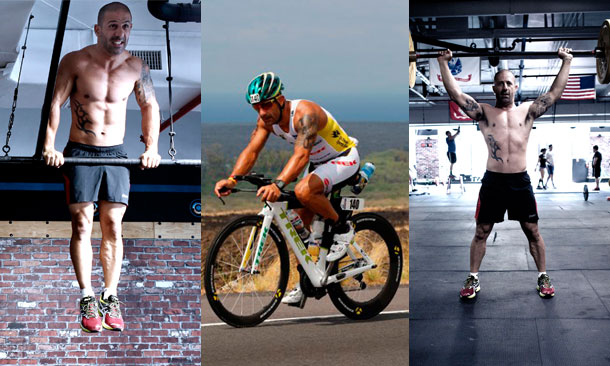Drivers train physically, mentally for 'unknown'
MAY 28, 2013
“Dig deeper,” Tony Kanaan exhorts himself after going the extra mile – or three – on a routine bike ride near his South Florida home. Physical conditioning is year-round for IZOD IndyCar Series drivers, who combat heat, G forces and dehydration in their race cars.
They’ll be taxed physically and mentally during the Chevrolet Indy Dual in Detroit – two 70-lap races on the 2.346-mile, 13-turn Belle Isle street circuit – in the span of 24 hours this weekend.
“You train smarter,” says Kanaan, the 97th Indianapolis 500 winner whose physique belies his 38 years. “When you’re young you have all the energy so you go do everything until you die. But it’s all psychological. I’ve learned a lot with the Ironman (triathlon). The professional winners are 38 years-plus because they’re more mature and they use their experience in their head. I train a lot less but a lot more efficient.
“If it was just about physical condition, then you could put any good athlete in a race car and they would win. We’re trying to develop other things. Cars have changed, driving styles have to change so I’m trying to adapt and learn new things in the car on the track.”
Preparation, Kanaan suspects, will be more mental than physical for the inaugural doubleheader weekend in IZOD IndyCar Series history.
“You can prepare physically, and we’re training all the time, and you can hydrate properly like you always do,” notes Kanaan, driver of the No. 11 KV Racing Technology-SH car who won at Belle Isle in 2007. “But how you prepare mentally for two races, especially if you have a poor first race, is what gets you concerned because of the unknown.”
Charlie Kimball, driver of the No. 83 Novo Nordisk Chip Ganassi Racing car, must be cognizant of his blood glucose level throughout the race weekend. He’s the only licensed Indy car driver to compete with type 1 diabetes. Still, he also envisions the mental aspect for 140 total laps as the more daunting element.
“The physical side, you put the hours in the gym,” he says. “Mentally, coming off giving it all in the first race and saying ‘OK, learn those lessons, process that quickly, go get the nutrition you need’ and then turn that replay of the race off so you can sleep and prepare and start thinking about the next day. I wouldn’t be surprised to see people excel in that situation, see people struggle.”
A short-term physical toll – including blisters on hands from the friction of the steering wheel through the gloves in making more than 1,000 turns in each race -- comes with the territory, according to Andretti Autosport’s James Hinchcliffe. There’s also an impact on his crew, which does double duty of preparing his No. 27 GoDaddy.com car for the qualifying sessions and races and servicing it during pit stops.
“We don’t have power steering. It’s not F1, it’s not NASCAR,” he says. “We manhandle these (cars) around these tracks, and curbs and bumpy surfaces on street courses are tough to deal with. At the end of a race you often have like a ton of blisters on your hands. You’re also asking an awful lot of the teams if something goes wrong.”
Crews have put in ample time in the gym, too, and have had conditioning adjusted leading up to the race weekend to include more stretching and honing body movements for their specific pit stop tasks.
“A pit stop lasts less than seven seconds, so everything is explosion to the task,” trainer Aaron Feldman says. “You still use strength but unlike a driver you use it for power. They’ll need it for the two races in Detroit.”
















